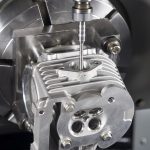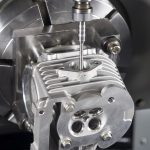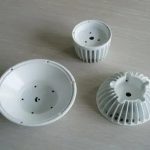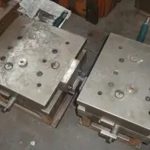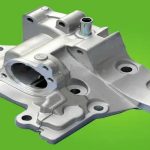The 690 alloy tube used for the steam generator heat transfer tube of nuclear power plant bears the corrosion of high temperature, high pressure and water medium, alloy grain size, intergranular Cr depletion, intergranular carbide and its force on stress concentration.
The academic effect is an important factor that affects the intergranular corrosion and stress corrosion resistance of materials. In addition to strictly controlling the composition, a reasonable heat treatment process can eliminate the influence of these factors on the material properties.
The benefit and impact aspect is crucial.
Taking the microstructure of the foreign Inconel 690 finished pipe as the reference object, the solution treatment and isothermal heat treatment (TT treatment) process of the domestic GH690 alloy pipe under different process conditions are carried out.
Research has been done; the effects of process parameters on its grain size, grain boundary carbide morphology and Cr-poor zone are analyzed by characterization methods such as OM, SEM and TEM. the result shows:

(1) The grain distribution of finished Inconel 690 tubes abroad is uneven, the average grain size is about 23μm, and the number of grains with a grain size of 7 to 10 is the largest. Grain boundary carbides are mainly fine.
TiN particles are distributed semi-continuously and there are many large-size TiN particles. There is a Cr-poor region with a width of about 200nm near the grain boundary.
(2) During the solution treatment process of domestic GH690 alloy tube, as the solution temperature increases, the crystal grains continue to grow, and the growth activation energy is 265kJ/mol. When the solid solution temperature exceeds 1100℃.
At this time, the grain growth is more obvious, and the effect of holding time on the grain size also becomes significant.
(3) After the domestic GH690 alloy tube is treated with TT under different process conditions, the grain boundary carbides mainly appear as fine and dispersed, fine and semi-continuous, coarse and semi-continuous, and coarse and dispersed.
Kind of distribution status. When the process parameters of TT treatment are 680℃/10~20h, 715℃/10~20h, 750℃/5~15h, the grain boundary carbides are distributed in fine semi-continuous.
(4) The average grain size and grain size distribution of domestic GH690 alloy pipe after solution treatment at 1090~1110℃/5min are close to those of foreign Inconel 690 finished pipe. After 715℃/10h or 15h
After the TT treatment, the grain boundary carbide morphology and Cr-poor zone evolution characteristics of the domestic GH690 alloy tube are similar to those of the foreign Inconel 690 finished tube, but the size and quantity of TiN particles are significantly smaller and less.
In the latter, and its lowest Cr concentration is higher than the latter, it helps to improve the pitting corrosion resistance and intergranular corrosion resistance of the alloy. The overall microstructure of domestic GH690 alloy tube is better than that of foreign Inconel 6
90 finished tubes.
(5) Comprehensive comparison of the structural characteristics of 690 alloy pipes at home and abroad, and taking into account the cost issues in actual production, it is recommended that the heat treatment optimization process of domestic GH690 alloy pipe is 1090~111
0℃/5min+715℃/10~15h.
Please keep the source and address of this article for reprinting: Optimization of heat treatment process for GH690 alloy pipe
Link to this article:Optimization of heat treatment process for GH690 alloy pipe
Reprint Statement: If there are no special instructions, all articles on this site are original. Please indicate the source for reprinting:Mold Wiki,Thanks!^^


